Ever been overwhelmed by the variety of batting (or wadding) options available or which batting is the right choice for your quilt? This post will discuss how to choose batting for a quilt, including the different kinds of batting options.
This post is originally part of the Beginning Quilt Series (or How to Make a Quilt from Start to Finish), but options for different types of batting have changed a little since that time and I wanted to update the post. As always - feel free to weigh-in and share your thoughts in the comments. I love when you do because I haven't tried every product or technique.
Basically the definition of a quilt is a blanket made of a top (front) and back with a layer of batting sandwiched in between and held together by some kind of stitching through all three layers. Today we are going to discuss choosing the right quilt batting and backs.
There is a wide variety of quilt battings available on the market. Like everything else, the variety can get overwhelming so I’m going to break down some of the differences so that you can pick the batting best suited to the project you have in mind.
This post contains affiliate links
Factors to Consider When Choosing Batting for a Quilt:
The two most relevant factors in choosing from different types of batting for a quilt are Loft and Fiber
LOFT
Loft determines the thickness of batting. This means how thick or thin your batting is.
Low Loft = thin and High Loft = thick.
Low Loft batting makes a thinner quilt (obviously) but it is less bulky and works much easier for a running stitch whether done by hand or home machine - particularly if you are quilting it yourself.
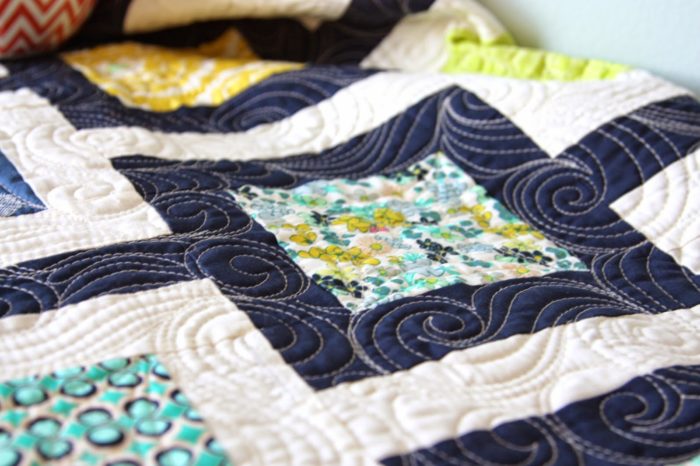
Custom Quilting by Melissa at Sew Shabby Quilting
High Loft batts are best for a thicker, comforter-type finish where the quilt is going to be tied (typically by hand) or if you really want to show off the quilting.
FIBER
This defines what the batting is made of. The three most common types of quilt batting are Polyester, 100% Cotton, and Cotton/Poly Blend and each has its own pros and cons. Wool, Bamboo and Silk Batting options have become more available in recent years. These other natural batting options have wonderful qualities, but are usually more expensive.
Polyester Batting - Pros: Less expensive, lightweight but very durable. The Low Loft options are better for hand-quilting, doesn’t need to be quilted as closely together. The Higher Loft versions are good for those who want their quilting to really stand out. The Highest Loft polyester batting is good for a thicker quilt - probably easiest to tie. Polyester batting options are often warmer - providing insulation without a lot of extra weight.
Cons: Tends to shift when not densely quilted and ‘beard’ (which means the polyester fibers migrate through the fabric to the outside of the quilt).
Cotton Batting - Cotton batting feels like a thick flannel. It's a light and breathable natural fiber and the heaviest weight batting. Better option for machine quilting. Generally must be quilted closely.
Washes better without pilling. Shrinks slightly - especially if it's 100% cotton. (This can be good or bad, depending on your personal preference. I personally like when the batting shrinks after the first wash because it softens the quilt and gives it a softer crinkly look for a more vintage appearance.) Generally softens over time and ages well.
Cotton blend batting (usually 80% cotton/20% polyester). Very similar to the cotton option, but a cotton poly blend is less-expensive and doesn’t shrink as much. Good for machine quilting. This is what I use most often.
- What is Scrim – Cotton and Cotton/Poly blend battings sometimes come with a feature called Scrim. This is a thin layer of stabilizer on one or both sides of the batting to prevent the fibers from separating or stretching. Scrim is often felted or needle-punched onto the batting using tiny needles making it stronger and more stable - and an excellent choice for machine quilting. The benefit of this is that you can place your quilting stitches further apart—as much as 8-12″ apart, versus a maximum of only 3-4″ for batting without a scrim. Batting with a scrim is great for machine quilting, but because of it's density it is too thick for hand-quilting.
Wool - 100% natural fiber, but it can shrink so if you buy it, make sure the label states if it's been pre-shrunk. Resists folding and creasing and has great stitch-definition for showing off fancy machine quilting. It's also beautiful to hand quilt through. Wool batting is warmer and at the same time lighter-weight.
Drawbacks: higher price and potential allergic reaction for some people.
Bamboo Batting - eco-friendly, natural fiber. (Typically blended with Cotton which makes it great for breath-ability.) This Maple Leaf quilt was made with Bamboo Blend batting and the texture of the quilting as well as the drape of the quilt are amazing, even for a quilt that is densely-machine-quilted.
Fusible Batting is made with a fusible resin on both sides of the batting. This allows you to "baste" a quilt by simply ironing the three layers together. This is a temporary fusing and typically works best on smaller scale projects. You can find Fusible Batting here.
How to Choose Batting for a Quilt - Advice from a Long Arm Quilter:
I reached out to Melissa Kelley - a Long Arm Quilter at Sew Shabby Quilting for some of her insights and recommendations on choosing batting for a quilt:
"The first thing I always ask a client when trying to choose a batting is what their budget is for this specific quilt. Some quilts, for whatever reason, we don’t want to spend a lot on. For these quilts, a basic 80/20 works great. Not all brands are created equal, so making sure that you get a good brand will be something to keep in mind. We use Winline and Quilters Dream 80/20.
If you have a special quilt that you want to invest in, I think batting is an important thing to consider. I always recommend 100% wool if you want to “show off” the quilting. I mostly recommend this for custom quilting because it really makes the quilting POP! This is a great choice if you plan to display or enter a quilt into a show. We use Quilters Dream 100% Wool. I have tested it in many of my personal quilts and it washes and wears well.
If you want to spend a few extra dollars for a special quilt that needs to be extra cozy, I recommend a bamboo or a bamboo blend. After trying many types, Winline 6oz 100% bamboo is AMAZING! I actually put this in most of my quilts. You want a quilt to be a family favorite? Add this batting! It also gives the perfect crinkle. If you want to go an extra special - combine the 6oz 100% bamboo and cotton voile fabric for the backing. It’s dreamy!"
Thanks Melissa!
How and Where to Buy Batting for Quilts
Batting can be purchased by individual size - typically based on the traditional bed sizes (crib, twin, queen & king) you can buy it by the yard off the bolt (typically available in big box stores like JoAnn Fabrics). Batting is also available to purchase in bulk by the entire bolt - which is a great option if you use a lot of batting. Batting goes on sale often at the big box stores. I always stock up then – or use those 40% off coupons.
Lots of Quilt Batting options are available by the roll (or off the bolt) or pre-packaged individual sizes. Connecting Threads has a huge variety of batting choices and frequent sales. (Connecting Threads also has a helpful info page about what size and kind of batting you need.) You can also find batting on Amazon.
Save your Batting Scraps
Don't forget to save your large batting scraps. It’s very easy to whip-stitch (largish) scraps together. (And even easier to use fusible Batting Seam Tape to join smaller pieces together side by side.) Or you can use your scraps to make an easy table runner!
Or use those scraps to make small 'quilt-sandwiches' to practice your machine quilting on your own machine.
What Size Batting Do You Need?
You want your batting to be larger than your quilt top (front) by about 4" bigger than the length and height and slightly smaller than your quilt back. In other words the backing should be the biggest of the three layers.
Let’s talk Quilt backs:
If you are following along in the Beginning Quilting Series baby quilt project you will need 1 ¼ yards of fabric for the back. This should be roughly 42″ square.
Most fabrics come 42-44″ wide which is perfect for baby or crib quilts. For larger quilts you will need to piece your back – meaning you will need to sew yardage together.
Some fabric companies do make Wide Back Fabrics (90″ - 108" wide) so that you don't have to piece a back. In addition to saving time, it's often less expensive to buy the yardage using a Wide Back option.
A pieced back can be as simple as one seam, using the same fabric for the whole back or complex with multiple fabrics and seams. Just so long as it’s a few inches bigger on all sides than your front, you’re fine. The reason a back needs to be bigger is because you’re usually quilting from the top of the quilt and the batting and backing can shift slightly underneath. The extra inches are your insurance policy that your back doesn’t suddenly become smaller than the front.
Next in our Quilt Along Series: we'll talk about basting and quilting – putting all the layers together. Once again there are lots of options.
Here are some other helpful tips for basting your quilt layers together:
Pin Basting a Quilt shortcut from Pat Sloan
Spray Basting a Large Quilt using a Design Wall
This post is sponsored by Baby Lock Sewing Machines but all content, thoughts and opinions are my own.
I have been a Baby Lock ambassador for over 6 years now and have loved every machine I’ve worked with. They also have machines simple or complex to fit your needs! You can find your nearest Baby Lock dealer here. Baby Go HERE for tips for choosing the right sewing machine for you.

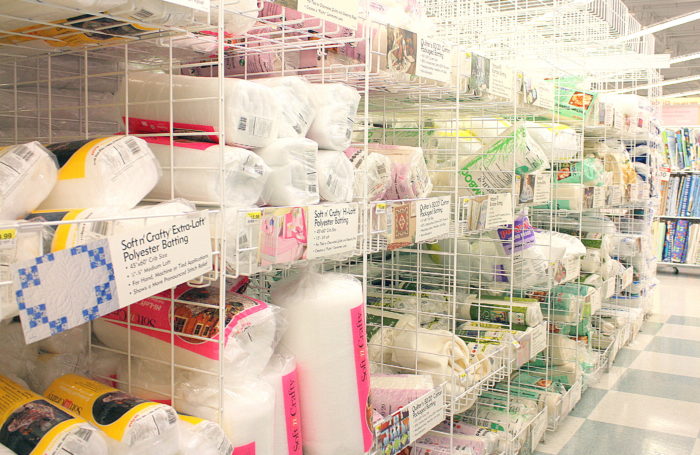
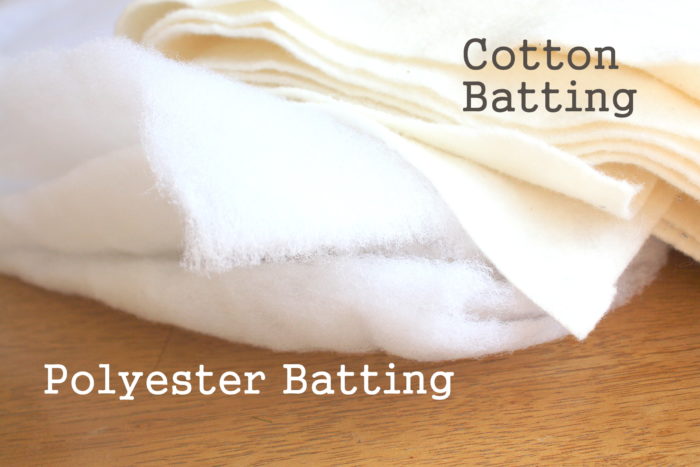
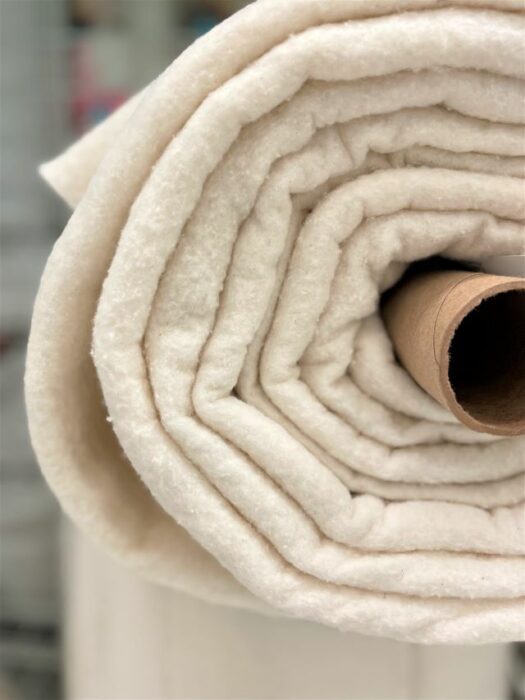
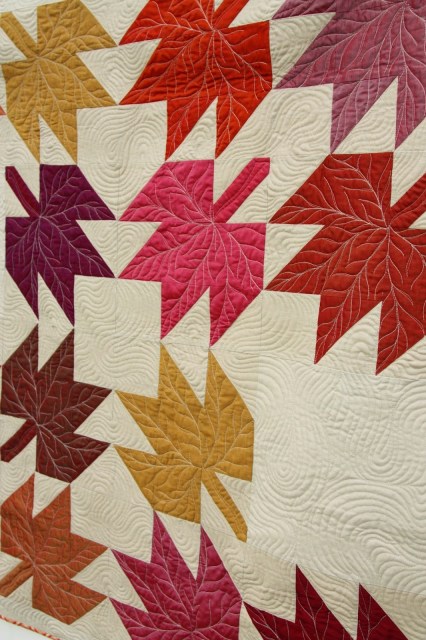
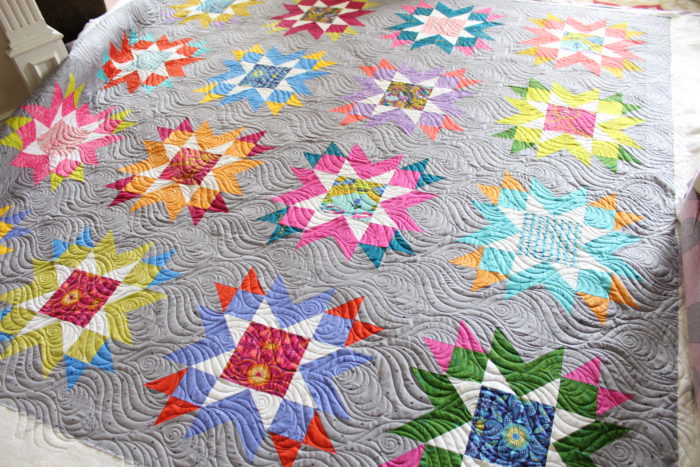
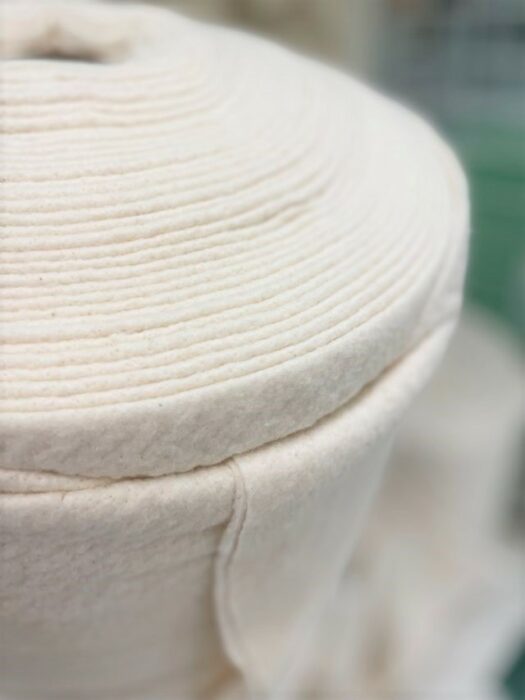
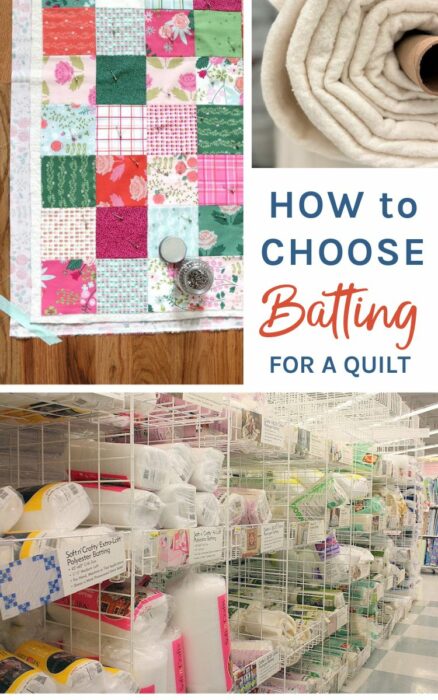
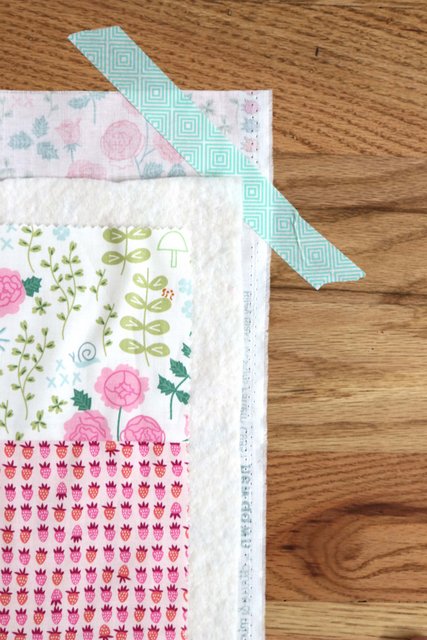
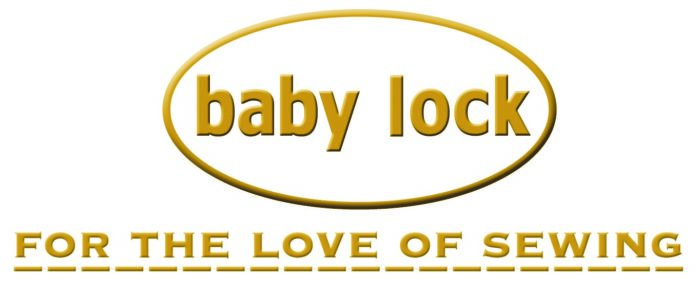
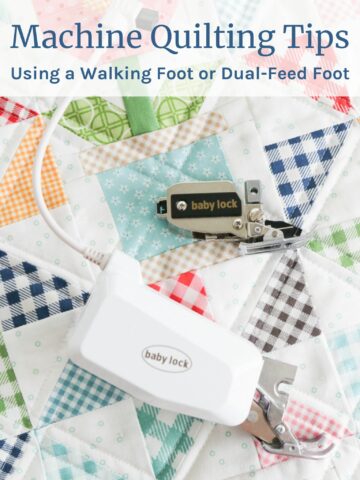
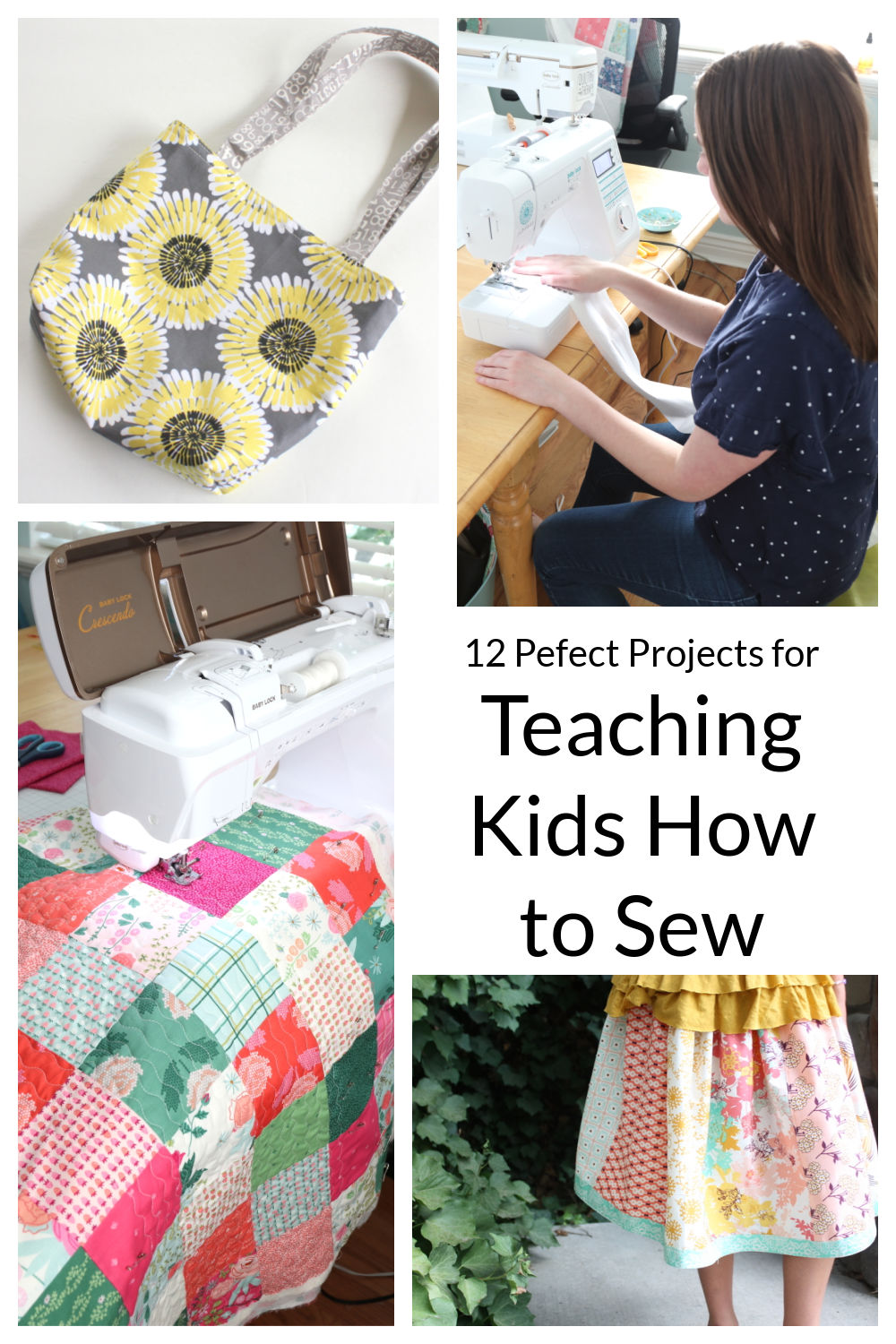
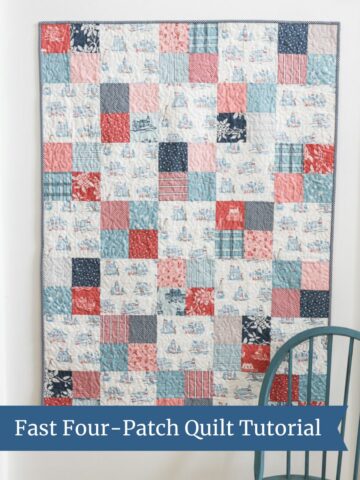
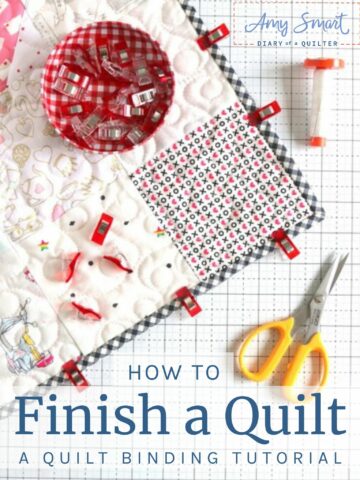
Jan Hatchett
Hooter Hider??? Gotta love it!
The Tulip Patch
I finally decided to look at the prepackaged batting at Hobby Lobby the other day. I thought it would be more expensive, but I found this stuff called Mountain Mist Cream Rose that is 100 percent cotton (unlike Warm and Natural...total false advertising I think) and it ended up being 4.99/yd with the coupon. I am going to try it...it's thinner but we live in Houston so that might not be a
Amy
Actually, in order to go into my longarm quilting business, I had to send in batting samples to the State Laboratory in Reynoldsburg, Ohio and have them test the batting that I intended to use. Warm & Natural came back as "blended cotton", their blended product Warm Blend came back at 54% cotton and 46% polyester (the pkg. states it's 50/50), the Warm & White came back
Andrea
Interesting!!!!
Lee Ann
Yes! I get overwhelmed with all the batting options out there. Thank you for the link to your article!
Marg
I wish I had half that to choose from, we just don't have that many options here.<br />Hooter Hider...now that's a great name, congratulations on being featured at Sew Mama Sew.
Theresa
I'm still laughing. I thought this post was going to be about Halloween....bats....get it?!
Jennifer
LOVE bamboo batting!! It's all I use. It's a little pricey but not too bad with a %40 coupon...plus the crib size is a generous 60x60.<br /><br />It quilts and washes nicely...<br /><br />Jennifer 🙂
natasha | sohobutterfly
I've used the bamboo batting and I quite like it too. Surprisingly, it's cheaper than the cotton batting in our neck of the woods. I also like that it's eco-friendly.<br /><br />Question for you (or others): Do you ever double up the batting? Hubby wants an extra-warm quilt for winter snoozes on the couch and I was thinking of doubling up on a low-loft batting to keep the quilt
Cindy
Never sleek or sophisticated...that's what I like about you Amy, you're just an average everyday person (with loads of quilting greatness:) just like a lot of us!(the everyday part not the quilting greatness:) I love your blog and check in every morning with my coffee. Thanks for sharing what you do with all of us!!<br />orr20004@msn.com
Crafty Mama
Lol, love the hooter hider ☺<br />I only ever use warm and white, but am definitely interested in what other people use!
Mary
I have used bamboo batting and it is very lovely to quilt, both for hand quilting and for machine quilting. My only complaint with bamboo (and it is not much of a complaint) is that it does beard a little. This can be somewhat annoying when working with a dark background fabric. But by no means is the bearding a deal breaker. I also use wool and 100% cotton. If I use cotton, I love Quilters
Dree
I use Quilters Dream 100% cotton. That's it. I like it. Prefer the Select loft, but can't always get it.<br /><br />I haven't tried bamboo because it's $$ and my 2 favorite stores (both locals) don't carry it.<br /><br />I'm allergic to wool, so won't do wool, period, any percentage. Don't do polyesters (any percentage) either.<br /><br />I like my quilts 100%
Babs
Hi Amy!<br />I became a follower a while back just because of your "hooter hider" (GIGGLE). Bought my fabric and boning for mine a couple weeks and can't wait to make it!<br />Thanks for your awesome tutorial. I am really loving your blog :)<br />-Babs<br /><br />P.S. Congrats on the feature!
Sew Create It - Jane
Batting is a mine field. I recently tried a bamboo and cotton blend batting and that was lovely to work with.
Blogless me
There is a blog of a very brave lady that has set herself the task of systematically comparing different battings. It seems a lot of work, but it makes for some useful reading. You can visit her blog appropriately called "I've gone completely batty!" at:<br /><br />https://quiltersbattinguniversity.blogspot.com/<br /><br />I hope this helps!
searchfamilies
I wish i could jump in to the photo of all that wadding, locally don't have choice i am making a book of samples of different waddings/batting so when i need some i can choose which is best for the job that said sometimes even then can't get it lol<br />Hugs Janice
Dresden Quilter
I have used bamboo batting before and really like it.
Layne Bushell
I use Hobbs 80/20 because it's the least expensive for me. But I think I'd prefer 100% cotton. A local quilter told me that bamboo is warmer that cotton. <br /><br />If you want a thin bat and warm, try wool.<br /><br />I also learned years ago that warm and natural keeps has the natural cotton seeds in the bat. These seeds contain oils. So she suggested to never use the warm and
Quilter Kathy
I did try the bamboo batting and liked how it quilted, but haven't washed it yet, so don't know if I'm totally sold on it!
Annette
HI again AMy,<br />I am so lazy... Just found some info on battings right here on your blog. Think I got the answer... Sorry wasting your time.
Laura
my quilt store recommends the fuseable poly/cotten blend but after reading many quilting blogs I have never seen anyone mention the fuseable batting. It seems so much easier than pinning or spraying, is there a reason not to use it?
amy smart
That is a great question! Honestly, I don't know enough about it to give a knowledgeable answer. Thanks for bringing it up! Anyone have any insights on fusible batting?
Anonymous
I've used the bamboo batting that iron's on. I was a bit skeptical to use it at first but after the quilt was washed it looks great and is nice and soft. I have to say I use it every night as I am always cold. I actually get hot under it. The bamboo is definitely the warmest quilt I have. I will use it again in my next quilt project 🙂
The Family of Three
Thank you so much for posting this about batting. I wonder every time I look at this isle, which is best and why. I love that you described "why" these things make a difference. Very helpful tutorial! I also made your nursing cover for my soon to come baby! Thank you!
Anonymous
The fusible batting I've used was awesome. I've only used it once (the last quilt I made) but I will definitely use it again.
Serena
stumbled upon your blog while searching for reviews on a particular batting. I exclusively hand quilt and fusible batting is absolutely horrible for the job! The warmth of your hand applied to the batting is actually enough to stick the fabric to areas while you are quilting causing small puckers....also while hand quilting with a hoop a little movement in the layers is essential to really
artsyfartsyweirdo
I like to find flat bedsheets at thift stores (good condition, clean, not wearing thin, high thread count, fun pattern, or plain white) for $2 as my backing, instead of 4.99$ a yard or more, and having to piece it together. I just get one size bigger than the bedsize of the quilt I'm making. Even ebay is a good way to do this if you don't want to get a used piece of fabric
Katie
I have used fusible batting in a baby quilt, and it is a nightmare! It make the quilt very stiff, and doesnt allow movement in the layers, creating puckers that aren't pretty. Also, it comes undone over time, meaning; as you quilt, the more you move it around, the faster the layers separate making quilting even more difficult! It is also very difficult to roll or wad on the right side of the
amy smart
Katie - thanks so much for sharing your experience!
Maggie Herbert
I adore bamboo batting for both hand and machine quilting the quilts are awesome , lovely finish.
city
thanks for share<a href="https://www.justdetective.com/" title="徵信社" rel="nofollow">.</a><a href="https://www.cool007.org/" title="徵信" rel="nofollow">.</a><br />
Sandy Bandt
I wish you had discussed wool, bamboo and silk battings as well. There's nothing new here.
MamaDoc
When I started quilting polyester was all the rage. It is easy to hand quilt, warm, light and cheap. It beards through dark fabric but I would still consider it for a utility quilt of denim, suiting, or courdoroy,. Cotton poly blends, with and without scrim came next, but I have found a lot of variability in drape and the amount it shrinks. Poly doesn't shrink at all so it doesn't crinkle
Steve Coren
Check this unique article that they created http://www.rosemonttextiles.com/weldable-webbing/
Morgz
Hi there, <br />I am a first time quilter-sewer and I was wondering if someone could help me out... <br />When I'm putting this batting stuff in my quilt, am I supposed to sew through the'back' cover, the batting and then 'front' cover? I get that I join my squares and everything, but once that is done is this the next step? Any insight would be greatly appreciated.
Joseph Main
This comment has been removed by the author.
Joseph Main
Good to know this thanks! I love <a href="https://www.fiberpartner.com/products/fibers/bicomponent-polyester-fibers/" rel="nofollow">Low Melt Fiber</a> which is commonly used as a binder fiber! Polyester have always proved to be the best in producing fibers materials. We get our all fibers from Fiberpartner Aps a worldwide supplier of staple fibers, yarns & plastics etc. If you anytime need
Mindy Kshywonis
How do I handle the huge 10 quilt size bags. Do you cut off pieces or unroll under long arm and nibble away at it?<br />
Rebecca Grace
Amy, I love it that 90% of the time when I google with a quilting related question, up pops a tutorial on your blog! 🙂 Question for you -- have you ever used any of the black quiltings? Any recommendations? I have an "Amish Baby" quilt with deep, saturated solids and a Moda Bella Solids black background, and I think a black batting is a good idea to prevent white fibers bearding
pJF
My grandmother used to order her batting via mail. I remember how thick the quilts used to be until washed several times over the years. I don't see that type of batting sold in stores. Where can I find a thick poly/cotton blend batting? My grandmother hand tied her quilts.
Amy Smart
I don't buy the think batting, so I'm not on the lookout for it very much. My best suggestion would be the big chain stores - and asking them if they don't have it in stock. You could check their online sites as well as they might have it there if it's not in stock in the actual store. Good luck!
susan
I have lots of pieces of polyester batting that had been trimmed from previous projects. Is there any easy way to connect these pieces so I can use them in small quilts (20" x 27" blankets for preemies) -- the hospital only wants the filling to be polyester. Handsewing the pieces is difficult -- what about glue????
Amy Smart
Pellon makes fusible seam tape - you use it to piece batting together - it's super slick! https://amzn.to/1S9o2C9 I'm sure you can find it at places like JoAnn fabrics as well.
Sandra Hlll
I am making T shirt quilt for my granddaughter and my first.
I want fusible batting, but my squares are 15x15"
Want low loft, what is the best fusible batting I can use.
Amy Smart
I've never made a T-shirt quilt, but I've heard people say they used Hobbs Cotton Heirloom fusible? One thing to consider is the printing on the t-shirts. Depending on what paint was used, it could melt with the iron set too hot (which is needed for the fusing part). Having never made one myself, I'm definitely not an expert - I would search more sites with t-shirt quilt experience. Good luck!
BARB GUENTHER
Any input on quilting very thick batting..1 1/2" ...and not on a square quilt.they are rather lima bean shaped. Machine quilting on my Pfaff ends up a mess and the batting does not agree with my large embroidery hoops...keeps slipping off.....HELP if you can please!
Amy
Thick batting is ideally made for tied quilts. I think it would be really difficult to quilt with a machine - especially a traditional sewing machine. My best recommendation would be using a thinner batting made for machine quilting.
BARB GUENTHER
you are right - it is very difficult. What i am trying to do is for saddle pads and the ladies like them 'puffy' for more padding under the saddle. have to think out of the box I guess.
Connie Rogers
My favorite batting is Bamboo. It is very durable over time and use and makes for a truly lively finished quilt.
Amy
I LOVE Bamboo batting! It has the most beautiful drape!
gerald salvatore martire
I am new to quilting and still learning . can you piece batting?
Amy
Great question - Yes! You can piece it together using a zigzag stitch on your sewing machine, or using fusible batting tape: https://amzn.to/2TvIIMG
Jackie
Thanks for the review of batting. I’ve never used bamboo but now I’m intrigued. I buy a roll of batting from overstock fast delivery and right to my door, Joann’s is still a quick and inexpensive place to get batting. Great coupons. Their fabric quality has really improved. I know some folks don’t like to use sheets as backing. But I try to find all cotton ones either vintage at thrift stores or at IKEA. Great for machine quilting. IKEA has nice fabric but limited variety. I buy my bleached and un bleached muslin there washes nicely and 59inches wide
Amy
Thanks, Jackie!
jgrandf18
One reason a Long Arm Quilter requests the back to be 3-4" larger than the quilt on all sides is because we usually attach the back at the top and the bottom, which usually takes up about 2". Then you have to put the quilt about an 1" away from where we've attached the quilt to ensure the machine doesn't hit the clamp. That leaves about 3" to ensure we don't run out of space. Same with the sides. So, be kind to your longarmer and give them the fabric they need so we can quilt the best we can.
Amy
Very helpful info!
Mrs. Plum
I recently used silk batting for a throw quilt. I wanted a natural fiber that wouldn’t beard, and silk was recommended. I found it on a good sale, so the price wasn’t too bad. The batting machine quilted beautifully. I’ve washed the quilt several times, and it washes well, with only a little shrinkage. My favorite batting for kid’s quilts is Quilter’s Dream Select Poly. It is white, quilts well, and holds up after many, many washings. One of the things I do with batting scraps is practice quilting motifs, try different threads, and check tension. I save some of the quilted pieces for inspiration when I am stuck.
Amy
Thanks for sharing your experience with silk batting. I've never tried it - it sounds amazing. And thanks for sharing all of the other great tips too! Yes, batting scraps are perfect for practicing machine quilting. Such a good suggestion!
fussell
What a great post! I will say that I've used poly batting for years, a high quality poly batt should not beard, I've never had an issue with bearding. I can use a high quality batting that's half the price of cotton and still have lots of money leftover for more fabric! Bonus: poly quilts tend to dry much quicker in the dryer. I've always wanted to try silk or bamboo but the budget just isn't there. Nice that there's so much variety available.
Lee Ann Kittleson
I would like some information about batting color---natural, white, or black. How do you decide which color to use, particularly natural or white? I've always used natural for projects I've quilted at home. Recently, I used the services of a longarmer for the first time, and she suggested I use I white batting for it. My quilt was actually one of yours---Chain Link---although a substituted a dark gray for the navy.
Jen
Backing also needs to be longer than the quilt top and batting because sometimes if you're table-top pin basting on a narrow table, the layers aren't quite parallel to one another. And/or the scrap-pieced backing isn't squared. Ask me how I know!
buddhajames777
I ran to JoAnn Fabrics recently when I discovered I'd run out of white batting (emergency!) and was only able to find something called "needled cotton" in white (Warm & White). I've never seen that before. Do you know what it is and what the advantages/disadvantages are? I was in a pinch and didn't have much of a choice at the time, so I just decided to take the chance. But, actually, while making the quilt I had three cataract surgeries (NO they don't always get it right the first time!!) and discovered I have the world's worst sewing machine for patchwork. So, taking a chance on this batting didn't seem like much of a gamble. But, the quilt I made for this 3-yr-old is now over 6,000 miles away, and I don't know how/if it survived its first washing. Since, I've got a bunch of the batting left (I made a 48x60 quilt but bought a king-size package), I'd appreciate any insight you might have before I use the rest of it on things I'm planning to sell at the Church bazaar in November. Thanks!
Sarah Craig
Our church group makes a lot of quilts to give away, and the one request we’ve received about batting is to use polyester batting in quilts that will be going to homeless people, because it dries much quicker if it gets wet. I also heard a quilt designer who travels a lot with her quilts say she uses polyester in those because it doesn’t wrinkle when packed!
Ann Johnson
Referring to your sentence " If you want to go an extra special – combine the 6oz 100% bamboo and cotton voile fabric for the backing. It’s dreamy!” What is cotton voile? When I look it up, I find cotton voile is sheer fabric often used for curtains (and usually poly/cotton). Would you please provide a link to the cotton voile suitable for quilt backing? Thank you!